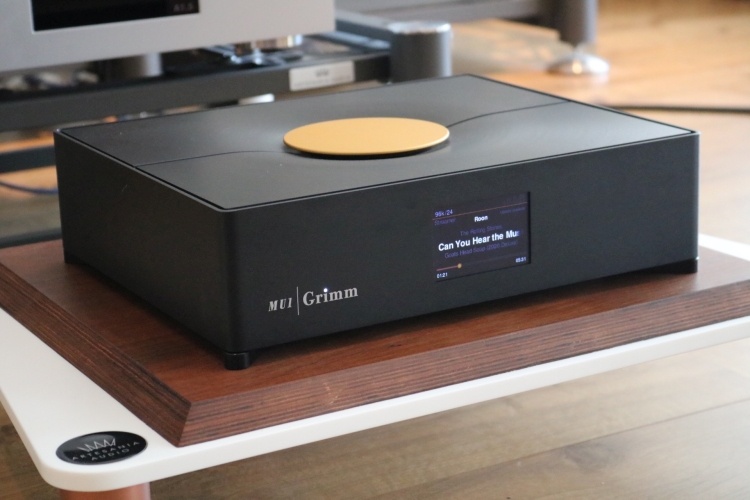
Sell your CD player?
Now, to get back to Ben’s claim that the MU1 is worth selling your CD player for. Is it? For the most part, yes, indeed. The MU1’s performance is so superb that it’s a no-brainer. That said, if I’m honest, I must admit that even the MU1 does not sound entirely identical to the best CD transport that I have available. The MU1 certainly performs equally as well in the familiar audiophile parameters such as transparency, refinement, speed, dynamics, or even resolution. Actually, many CD transports will struggle to scrape the amounts of detail off the disc that the MU1 is capable of. But what CD, when done right, can still add is more depth and flow. But fair is fair, the difference has become smaller than with any server that I heard before.
All this left me wondering how the Grimm team managed to combine all these traits in a single device. I asked and the answer was, somewhat evasively, “you have to know what to measure for”. Personally, I think it has a lot to do with the FPGA board and the Grimm Audio clock, as well as the power supply. Inside is a custom-made switching power supply and although the principle is far from unique, it takes deep knowledge to make one that performs superbly while not contaminating its host or other components in the system with noise. Evidently, the Grimm Audio team has taken great care in designing and implementing this part.
Oversampling
The MU1 can be set to Original, 2x, and 4x. The differences are easy to hear and I had a clear preference for the highest setting. Original provides a “squarer”, more “normal”, relatively direct-coupled, and earthy sound that I find attractive for its superb bass precision. But along with the earthiness comes a dulling in the high frequencies and a much more compact soundstage. Actually, compared to other digital sources, it’s fair to say that the MU1 with 4x Oversampling provides more air than is strictly neutral. But along with this also comes its organic quality, the extra refinement, and the deeper and wider imaging that sets the MU1 apart from most other servers. More importantly, I find that it most resembles CD playback when set to 4x Oversampling. And most importantly, the airier presentation is provided without the treble sounding tipped up in any way.
The 2x setting lands precisely in between the two other settings with enhanced refinement and fluidity with a moderate amount of smoothness compared to the Original setting (no Oversampling) but less lush and refined and spacious than with the 4x setting.
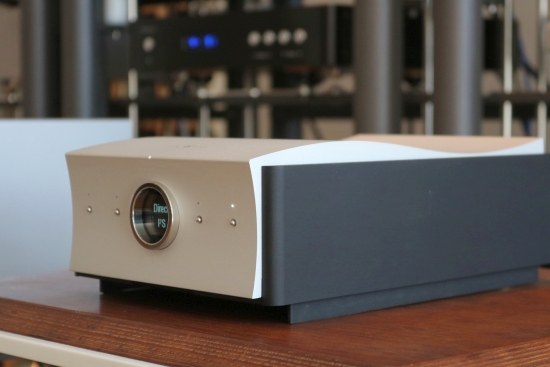
Mola-Mola Tambaqui
Simultaneous with the MU1, I also had the Mola-Mola Tambaqui DAC on review. As this DAC has its own review I won’t go into specifics here, but suffice to say that this unassuming little DAC is something special! Not only does it sound superb, but it also pairs very well with the MU1.
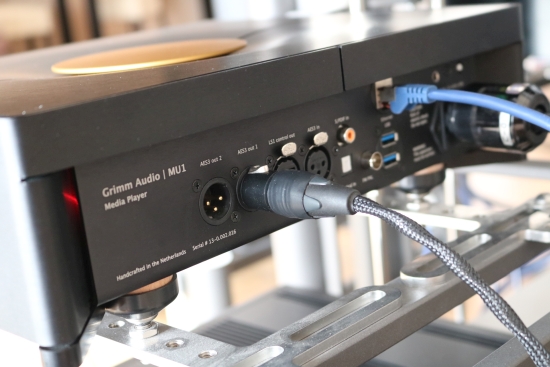
Inputs
When routing well-known digital sources through the MU1, they receive the same benefits as described in the Oversampling section above. While that can have a desirable result, I also found that some of the original component’s character was diminished when routed through the MU1. For instance, when connecting three sources with very different sonic characters such as the Zanden 2000 CD transport, the Aqua LinQ network transport, or a Spectral SDR3000 CD transport, their relative differences were lessened and smoothed, and mixed with the Grimm benefits. Meanwhile, none of the sources sounded as superb as the internal Roon server. Thus, the decision to use the external inputs will be a personal one.
S/PDIF output
After I finished writing this review, Grimm issued the news that they will add a cinch S/PDIF output to all MU1 units, in addition to the pair of AES/EBU outputs that it currently has. Alas, this change cannot be retrofitted to older models.
Update June 21, 2021 – Updated MU1 hardware
While the Grimm Audio team worked on implementing the S/PDIF upgrade, Bert Bazuin of Terrason Audio, the Dutch distributor for Grimm, kindly agreed to let me keep the series 002 demo unit for a while to enable further comparisons. Last week, Bert called me up to let me know that the work on the new model was complete and the unit was now available. And sure enough, a couple of days ago, a box arrived with in it a brand-new series 003 MU1 unit for me to assess. The reason for this extra comparison is that along with the S/PDIF hardware update, Grimm has also tweaked some of the internal hardware and has found ways to further reduce the jitter as measured in various locations, even if it was already extremely low.
Although the S/PDIF output is physically available on my sample, it is not yet enabled in the software. This will follow later as part of a software update.
Comparing the two units side by side (using two Roon accounts) with the CH C1 DAC and two Jorma AES/EBU cables, to my surprise, the new series 003 unit does indeed have an even denser, more direct, and more impactful delivery. Remarkably, even though the initial series 002 review model was already benchmark-setting in terms of bass quality and dynamic impact, the new model simply has an even more robust sound!
The bass now has an impressive “chiseled-from-granite” quality while the midrange has an even more energetic, direct, and propulsive feel which combines to an even more visceral and communicative delivery with an even higher jump factor. For me and with my system, this translates to an even more robust and engagingly “live” sound than with the earlier model or any of my other server/streamer solutions.
On a relative note, with this change, the MU1 has shifted its presentation away from gently smooth and organic to what I regard as a cleaner, more direct, and more exciting delivery while retaining the musicality and still involving me emotionally. Depending on the individual’s views, however, it can be argued that this change has also made the MU1 sound relatively drier and lose some of its warmth and flow.
Altered character and personal preferences aside, after having compared the two versions for days on end, the updated series 003 MU1 frequently had me excited. But I also cannot fault the earlier model’s interpretation. Bottom line, both servers perform absolutely magnificently in their own right and I could very happily live with either.
Owners of older MU1’s should definitely not feel short-changed by missing out on this latest update, but all the same, people contemplating getting a MU1 now should feel confident that they are getting the best the firm has to offer.
Needless to say, in either version, Highly Recommended!
Update 11-09-2021 – Remote Control Functionality
Grimm is working on IR remote control functionality that enables switching inputs as well as transport functions such as play/pause, previous, and next.
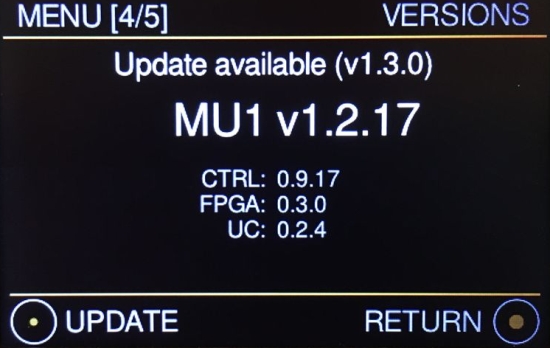
Software version 1.3.0 has now been released, which adds IR remote control functionality. However, there are no further instructions, so I took it upon myself to try and make this work. As I found, the MU1 unit does not contain an IR receiver, so you’ll have to add this in the shape of an external “eye” with a cable that connects to the MU1’s back, like the one shown below.
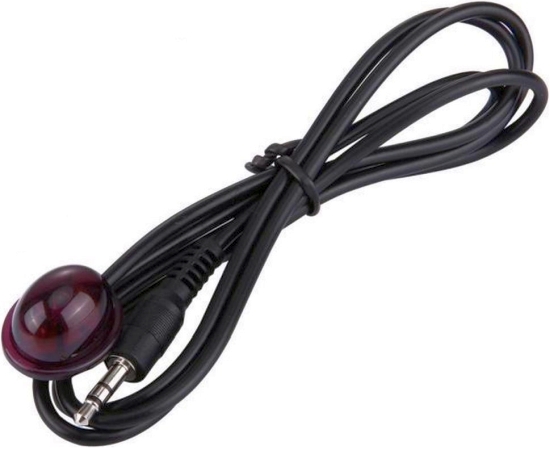
Then, it’s a matter of choosing the desired function on the MU1 on the IR setup page, pointing any remote control handset to the receiver, and pressing the desired button. Repeat for all the required functions.
For detailed instructions, see the MU1 tips & tricks video on the HFA YouTube channel.
Update 19-10-2021
Grimm Audio has officially announced the new software that enables IR Remote Control, as well as the S/PDIF output, apparently. I have just tested this and indeed, it works in parallel with the AES/EBU outputs, and without having to make any settings. Please find all the official information below.
We are pleased to let you know that new firmware for the MU1 is released. Version v1.3 adds two features that were in strong demand: an S/PDIF output and IR control. The RCA S/PDIF output that can be found on the latest batch of MU1 hardware is enabled. Customers can now use their favorite RCA S/PDIF cable.
The other feature also enables a MU1 hardware connector: the 3.5mm ‘remote control’ jack on the back, designed for use with common infrared extenders. IR remotes now offer access to play/pause, volume, source selection, previous/next track, and in/out standby. Our team took this assignment serious and the MU1 can therefore be used with any type of IR remote handset on the market. In case you find a remote that does not work, please let us know.
The MU1 software manual provides instructions for programming the IR function. For a good impression, watch the nice YouTube video that MU1 customer and Hifi-Advice author Christiaan Punter made. Enjoy!
Conclusion
The beauty of the MU1’s sonic presentation is that it is tight, precise, articulate, and very highly resolving whilst simultaneously avoiding sounding dry or clinical. On the contrary, the MU1 has a timbrally rich tonality and superb fluidity with a tiny hint of smoothness but without any dilution or smear. Additionally, the MU1 has a captivating 3D portrayal and sense of flow, along with the kind of organic presentation that makes it not only a very accurate Music Server but a highly involving, emotion-inducing Music Machine.
Update 05-05-2024
About one year after I finished this review, Grimm released a big firmware update that improved the Oversampling filter behavior. This changed the server’s characteristics, not just when actually using the 2x or 4x settings but also when using the “No oversampling” setting. This update had a significant impact, enhancing refinement, delicacy, transparency, and precision. For the most part, I felt this was an improvement, although it did mildly reduce the player’s overall liveliness and expression. Grimm released further smaller updates that introduced helpful new features without changing the sound.
The initial firmware update ties in with Roon’s ongoing sound quality changes. Over the years, Roon has reduced the intervals at which they release new builds to what feels like an update every month. When I initially reviewed the MU1, I was hugely impressed that it seemed impervious to the Roon characteristics. To my surprise, it did not suffer from the excessive warmth and thickness through the upper bass and lower midrange, which was so familiar to me from all other Roon servers.
The introduction of Roon build 2.0 also introduced the aspects typical of Roon for the MU1. Throughout the successive Roon updates, the presentation has also become more variable. With some Roon builds, the server sounds really great, and with others, not so much. It is the same with any other Roon server, and Grimm is not to blame, although the aforementioned change in the MU1’s filtering does emphasize the differences.
Whereas the MU1 used to be my crispest, liveliest, and most expressive source, it is now superseded by UPnP/MPD in these areas. The CD transport that used to sound mellower than the MU1 now sounds livelier and crisper. Perhaps most telling of all, my DAC is Roon Ready and the MU1 can stream to it directly. Naturally, I tried that as part of this review, only to find that the Grimm sounded much better to me using its AES/EBU output. But now, that situation is reversed. The other side of this is that those who may have initially felt the MU1 to be a little too clean or too dry for their tastes will likely feel differently now. To those, I recommend giving the MU1 another chance.
In summary, the MU1’s sonic balance has changed since I first reviewed it due to firmware updates and ongoing Roon updates, which means that it now requires different tuning.
Aspects that I now pay special attention to in order to achieve the original MU1 performance (as described in this review) as much as possible include using fast and open-sounding solid-core power cables with very low inductance, open and expressive-sounding digital interlinks, placing the server on Ansuz Darkz T2 footers (other direct-coupling footers can also work well), connecting only a single Roon server to the network at a time (or stopping the Roon core on the second server, as a second Roon core will increase the blurring effect), disabling and removing all DSP/MUSE filters in Roon, using a crisp and articulate-sounding network switch (avoiding those that sound ethereal and dreamy), and disconnecting any unneeded components from the network and power supply.
This addendum was added to provide up-to-date information so that prospective buyers can make a fully informed decision.
Importantly, even though it has changed, the MU1 remains my favorite server.

Videos on the Hifi-Advice YouTube Channel
How to add Remote Control Functionality to MU1
How Sooloos became Roon
Grimm MU1 and Antipodes K50
HFA Front Page
Try out Roon for yourself
External Links
Manufacturer: Grimm Audio
Distributor for the Benelux: Terrason Audio
Distributor for France: Prestige-audio-diffusion
Contact: Marc Loubeau
Tel : +33(0)6 49 89 68 88
Email: contact@prestige-audio-diffusion.fr
Website: www.prestige-audio-diffusion.fr







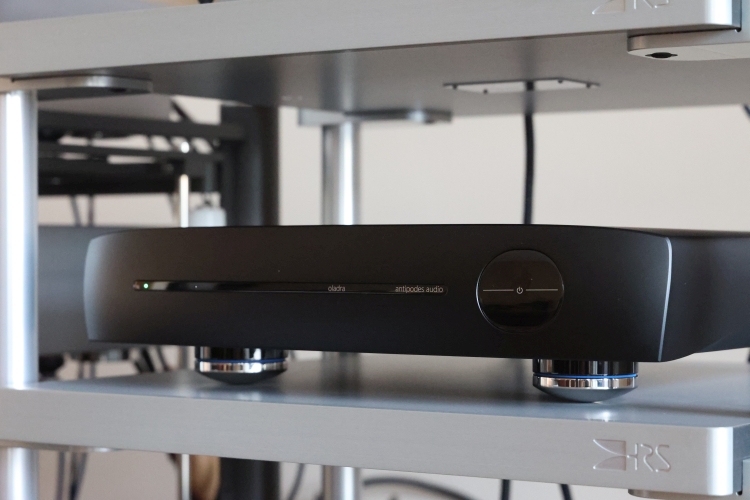
Hi Christiaan,
interesting review! Especially the comparison with the Aqua LinQ, which I own as well. Knowing the LinQ really well, it would be interesting to read how it compares with the latest and best implementation of the NAA + CORE module, allowing it to the the embedded HQPlayer on its own. If you have the chance, definitely ask for this upgrade – in my ears that’s a different level.
Best Robert
Hi Robert, as we speak, I am reviewing the Core+NAA module. And indeed, it is a very noticeable step up!
Hi Christiaan,
nice! Looking forward to your impressions. In my system, the
LinQ is connected via I2S to the La Scala MKII Optologic DAC – my perfect match with a sound signature more on the emotional/warmer side.
Best Robert
Hello Christiaan, thanks for another excellent review.
Any change of you reviewen the streamers from Hifi Rose?
regards Albert van Bentem
Hi Albert, I have no plans for that, but I will add the brand to the list of items that might deserve a review.
Hi Christian,
It was your review that takes away the last hordes and decide me to buy the Antipodes K50.
All my flacs on the internal SSD’s and only the ethernet connection for Roon updates and remote control. I use Squeezelite as player. The differences you describe with the K50 versus MU1 is what I do hear with the AES/EBU versus the I2S (HDMI) outputs.
I do use the fantastic Denafrips Terminator Plus which can do up/over sampling but I prefer the “rawer” NOS mode.
And there is something I do not like with this Grimm MU1; Updates (hard- and software) that can’t be implemented on the older units. The people that did buy these new and unknown server, paved the path for the upcoming innovations and should be “rewarded” for buying the first units.
Hello Christian,
I am in the market for a new Roon core server and have read your excellent reviews with interest. I currently use a SGC I7. But I have just auditioned a K50 for about a month.
I have ordered a Tambaqui Dac to replace my Bricasti and wondered if the Grimm might be a better match. However, I use convolution filters in Roon DSP and wonder if the I3 in the Grimm is underpowered?
Hi Jeff, the Tambaqui sure is a nice DAC, so long as it is used with an analog preamp. The MU1 and the K50 are both great but they have very different sonic presentations and which one is the better match will be a matter of personal preference and perhaps system synergy. FWIW, the MU1 in its current incarnation sounds clean, fast and very transparent and I would describe the Tambaqui similarly, albeit with a touch of gentle smoothness. The K50, on the other hand, has a full, smooth, and relaxed sound. Do you want to maximize transparency, articulation, resolution, and neutrality? Then the Grimm might be ideal. Do you want to pull the sound more toward fullnes, deeper tonal saturation, and liquidity, then the K50 could be more ideal. Regarding the processing power, I’m afraid I can’t provide a definitive answer as I do not currently use convolution filters. However, I have used these in the distant past with a much older and simpler machine and do not recall any slowing down or snappiness with the UI or the music playback.
Hi Christiaan, what is your impression of the latest Roon (2.0)/ firmware (1.5) updates?
Hi Vincent, Roon SQ is always going up and down, or sideways, depending on your view. And as it turns out, the MU1 is also sensitive to these changes in Roon SQ. For me, 2.0 sounds smoother and more polite than 1.8 (which some will like) but also less forceful and incisive (which I do not like). But I have been hearing small improvements with the latest crop of Roon updates. It’s not back to how 1.8 was at its peak, but it’s better than it was with the first incarnation of 2.0.
For me, the latest Grimm update (1.5) has barely had an impact on the sound quality from the last version (1.4). I thought I did hear ever so slightly duller treble but it’s important to note that the simple act of restarting can also subtly affect the sound, at least for a short period of time. In my successive day-to-day listening, the MU feels the same as it did with 1.4. If there really is a delta then it’s too small to reliably detect or describe. I was also happy to find that switching on/off the second output seems to be transparent.
For me, the last Roon update was a good one: detail retrieval got beter, and separation of instruments improved. There is no way to travel in history and go back to 1.8 I guess..
Thanks for sharing your impressions!
Hi Christiaan
Hope you are doing well. Love your site, reviews, methodology and style.
Have you had the chance to hear the Rockna wavedream net server, and if so how would it compare to the Grimm MU1 ?
Cheers
David
Alas, I have not heard any Rockna equipment yet.
Hi Christiaan, though this is not the right thread for my question: but why did you never put the Taiko Extreme to the test? And what about the newly introduced Audiophool Music Server 2.1?
Hi Vincent, I work for Taiko Audio. As such, there would be a conflict of interest:-) I have not heard the AudioPhool nor have I been approached by them.
I see, thats a really shame since I had them both in and compared last week. I was really curious about your findings. Since the TE is considered to be the ultimate reference streamer, it makes other comparisons somehow less relevant. But I get your point regarding CoI.
My main takeaway: the Taiko Extreme SGM has crazy resolution and black background combined with larger than life soundstage. The first guitar plucks in Private Investigations – Dire Straits sounded like real metal strings where the MU1 like plastics. Though better in nearly every aspect, the MU1 on the other hand offers a more relaxed presentation and more forgiving with less ‘audiophile’ mastered tracks. For example Michael Jackson – Thriller was a better performance on the MU1.
The TE performance reminded me of the moment using a TDK SA-X cassette tape for the first time on My first Sony walkman 🙂
Hi Christiaan,
I love your reviews and think that you write the best reviews for digital gear.
I was ready to buy MU1 but am backing off after the May 5, 2024 update. I thought that Grimm eliminated all other influences on SQ by their processing and reclocking of outputs. It does not seem to be happening based on your May update.
Are you using Roon only for the music library management and to pass unmodified data to the Grimm board, that is, without any processing or over sampling by Roon?
Any comments are welcome.
Regards,
Tony
Hi Tony, thanks for the nice feedback. It’s a tricky field. Purely theoretically, certain deviations are accounted for in margings, but large deviations should not occur. However, as I find with any gear, even digital gear, there are always influences, and circumstances matter. Depending on who you ask, my observations are spot-on, exaggerated, or not even possible. I have two friends with MU1s and one of them agrees with my findings while the other does not notice any differences. At the end of the day, all I can do is relay what I hear. But importantly, even though it changed since I first reviewed it, the MU1 is still my favorite Roon server.
Roon’s DSP functionality is superb and can come in handy when your room is not ideal and remodeling or treatment is out of the question. Using Roon DSP, I made my then non-SAM Genelec speakers sound really good even though they were in a narrow kitchen area. For my main system, however, I prefer not to use DSP or any Roon plugins, as they have an audible impact. Then again, if the room has severe issues, the net result with DSP can still be much better than without it.
When using the MU1 with its AES/EBU output, I have the Grimm’s oversampling set to none. But currently, the MU1 sounds best to me when streaming to the CH Precision’s C1.2 RoonReady Ethernet input. Even in this capacity, the MU1 has a large advantage over running Roon Core on a standard PC.